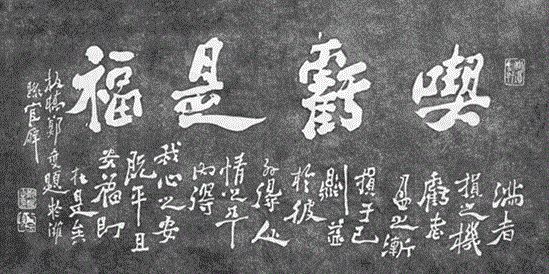Today we move on to a character related to 乎 and 兮 which we have learnt before - 亏, whose Traditional Chinese character is a quite complicated: 虧.
We know that 乎 means shout out aloud, while 兮 is used to mean sigh softly. 亏 with a dash above ㄎis believed to mean no sound can be made.
Regarding its Traditional counterpart - 虧, it is believed that 虧 was created during era of Qin dynasty as there is no 虧 found in neither Oracle scripts nor Bronze scripts.
We can see that 虧 is composed of two parts: 雐 and 亏, where 雐 is used to describe a bird exists only in ancient Chinese fairy-tells. Looking at 雐 carefully, with its upper part as 虍 and lower part as 隹, 雐 is a bird (隹) with a head as that of a tiger (虎). To me, 雐 should be originated from Owl whose Chinese name is 猫头鹰. 猫头鹰 is literally cat-head eagle. When Owl flies, there is too little sound to be heard by its prey. I believe Chinese ancestors noticed such characteristics of Owl and added 雐 to 亏 to emphasize the meaning of soundless.
 |
| Owl - 猫头鹰 |
So 亏 | 虧 contains the meaning of lost of sound, which was extended to mean lost / lose. for example 亏本.
It is fortunate for Owl to make no sound in catching its prey, 亏 | 虧 contains the meaning of lucky or fortunate. for example: 多亏你提醒.
As Owl is a symbol of ominous in Chinese culture, what is good for Owl is not good for us. 亏 | 虧 is thus also used as irony to mean reprimand or ridicule: 亏你做的出来.
That is all for 亏 | 虧, time to enjoy a Chinese calligraphy with 亏 | 虧 inside:
 |
| 吃亏是福 |
